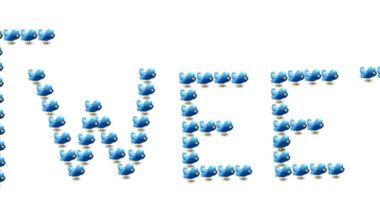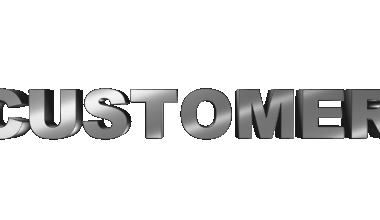Financial Apps with the Best User Experience Design
In today’s digital era, personal finance management has been revolutionized by robust financial applications. Many users seek tools that not only help them track expenses but also offer an elegant and intuitive design. A good user experience (UX) is essential because it allows users to navigate the app efficiently. With countless options available, it can be overwhelming to choose the right app that meets individual needs while ensuring an enjoyable experience. Financial apps should ideally simplify user interactions while providing valuable insights into spending habits and savings plans. Moreover, professional reviews and ratings can significantly influence users in their decision-making processes. Users may often prioritize features like real-time notifications, easy categorization of expenses, and customizable budgets. To find the most user-friendly apps, it’s essential to look at user testimonials, expert evaluations, and consider specific needs such as investment tracking or debt management. In this post, we will discuss some financial apps recognized for their superior user experience and feature sets that cater to different financial planning styles. Let’s explore what makes these apps stand out in today’s competitive landscape.
One of the leading financial apps renowned for its user experience is Mint. Developed by Intuit, Mint is an all-in-one budgeting tool that consolidates users’ financial accounts into one platform. The app’s visually appealing dashboard showcases comprehensive charts and graphs, allowing users to see their financial health at a glance. Mint users appreciate the ability to categorize expenses easily, set budget limits, and receive personalized insights, all while enjoying a seamless interface. The app also sends timely notifications for bill payments and unusual transactions, enhancing the overall user experience. Furthermore, Mint provides educational resources and tips for improving financial literacy, making it suitable for both novice and experienced users. Another noteworthy app is YNAB (You Need A Budget), which focuses on proactive budgeting approaches. YNAB’s design encourages users to allocate every dollar, thereby imposing a sense of financial control. The user-friendly interface is intuitive and appealing, making tracking finances enjoyable. YNAB also offers interactive workshops and live support, further enhancing user engagement and commitment to budgeting excellence.
Another highly-rated app in the realm of financial management is Personal Capital, which combines budgeting and investment tracking functionalities. This app provides a comprehensive view of users’ net worth and highlights their asset allocation in an easily digestible format. The dashboard utilizes engaging visualizations, which remarkably enhances the user experience by simplifying complex financial data. Users can set financial goals, track retirement savings, and get insights from personalized financial advisors. The unique blend of cash flow tracking and investment management distinguishes Personal Capital from typical budgeting apps. Additionally, its robust features provide unmatched transparency for users regarding their investments. They can efficiently analyze investment performance and balance assessments more than with standard budgeting apps. What makes Personal Capital particularly appealing is its commitment to security, ensuring users’ data is protected at all times. By prioritizing user experience, Personal Capital positions itself as an impressive tool for comprehensive financial planning and management, appealing to a wide demographic of users.
Track Your Spending
Another app tailored for meticulous users is GoodBudget, which adopts a modern take on the envelope budgeting system. This app encourages users to allocate their income into various categories, making it simple to track spending versus budgeted amounts. The clean interface is straightforward, offering a clear view of funds available in each category. GoodBudget makes budgeting collaborative, allowing users to share their budgets with family members or friends. Consequently, users appreciate the transparency that GoodBudget provides by allowing joint financial management. GoodBudget further enhances user experience by offering cross-device synchronization, ensuring access on different platforms like smartphones and tablets. Its user-centric design empowers individuals to manage their finances whether at home or on the go, promoting consistent engagement with their financial goals. The app’s features further encompass debt tracking and a proactive savings planner, ensuring that users can create comprehensive budgets with long-term objectives. Ultimately, GoodBudget stands out for its simplicity, collaboration features, and accessible design, which will appeal to both new users and budgeting veterans alike.
Another noteworthy contender in the financial app landscape is PocketGuard. This budgeting tool was created with a unique approach to keeping users informed about their spending limits. The app’s notable feature is its ability to provide users with a clear indication of how much money they can spend on necessities and discretionary items after accounting for bills, goals, and existing obligations. Its simplicity and visually appealing design elevate the user experience. Users can easily categorize transactions and monitor their monthly spending through a friendly interface. Furthermore, PocketGuard’s Smart Spending feature adapts to the user’s habits, offering insights and recommendations for optimizing expenditures. The seamless integration with bank accounts ensures that all transactions are automatically tracked, reducing manual entry. To make budgeting even more effective, PocketGuard provides users with personalized financial advice and offers ways to save. As a result, PocketGuard has become popular among users looking for clarity, helping them control their finances more effectively while maintaining a user-friendly experience.
For those interested in managing their investments, Acorns is an appealing app designed to help users invest effortlessly. Acorns automates investing by allowing users to round up their purchases and allocate the spare change into investments. Its simple, clean interface makes it easy for users to set preferences, explore investment options, and monitor growth. Acorns targets passive investors, focusing on simplifying complex investment strategies with minimal effort. The app embraces a personalized experience by providing users with tailored portfolios based on their risk tolerance. Users appreciate how Acorns brilliantly takes care of portfolio management, enabling them to concentrate on financial goals. Additionally, Acorns offers educational content that informs users about investment concepts, enhancing financial literacy overall. By keeping the platform user-friendly and engaging, Acorns effectively increases participation in investing among demographics that often shy away from conventional investment strategies. As a result, Acorns achieves its mission to encourage a new generation of investors in an accessible manner.
The Importance of Security
Lastly, another commendable app is Wally, which stands out for its commitment to simplicity and privacy in tracking expenses. Wally allows users to manage their finances without ads or unnecessary features. This focus on providing a straightforward user experience is appreciated by individuals who prioritize privacy and minimalism. Users can easily log their transactions, set goals, and analyze spending habits without feeling overwhelmed by complex settings. Wally also offers the option for users to scan receipts, making data entry faster and more efficient. The app’s design is tailored for keeping users engaged by creating a visually appealing environment for tracking finances. Wally encourages users to take control of their money while providing insights into daily spending. Additionally, the app prides itself on its multi-currency support and offline functionality, making it ideal for international travelers or users who frequently conduct transactions across borders. Through its unique features and user-friendly approach, Wally cements its position as a reliable personal finance app that emphasizes security and usability.
In conclusion, these financial applications exemplify the convergence of robust functionality and superb user experience design. When searching for an app to manage personal finances, potential users should prioritize apps that reflect their unique needs while emphasizing a streamlined interface. Features such as budgeting tools, investment tracking, and real-time notifications are vital, but so is the ease of navigation and usability. Optimal user experience leads to greater engagement and, consequently, more responsible financial management. Each app reviewed in this article has its own distinctive strengths, aiding various financial strategies. Ultimately, the right financial app can redefine how users interact with their finances, promote financial literacy, and encourage users to achieve their financial goals. Empowering users through these intuitive platforms marks a significant evolution in managing personal finance effectively. As technology continues to evolve, we can expect even further developments in financial applications, enhancing user experiences and supporting financial literacy on a broader scale. Users are encouraged to explore these recommended apps to find the best fit for their financial journeys.


